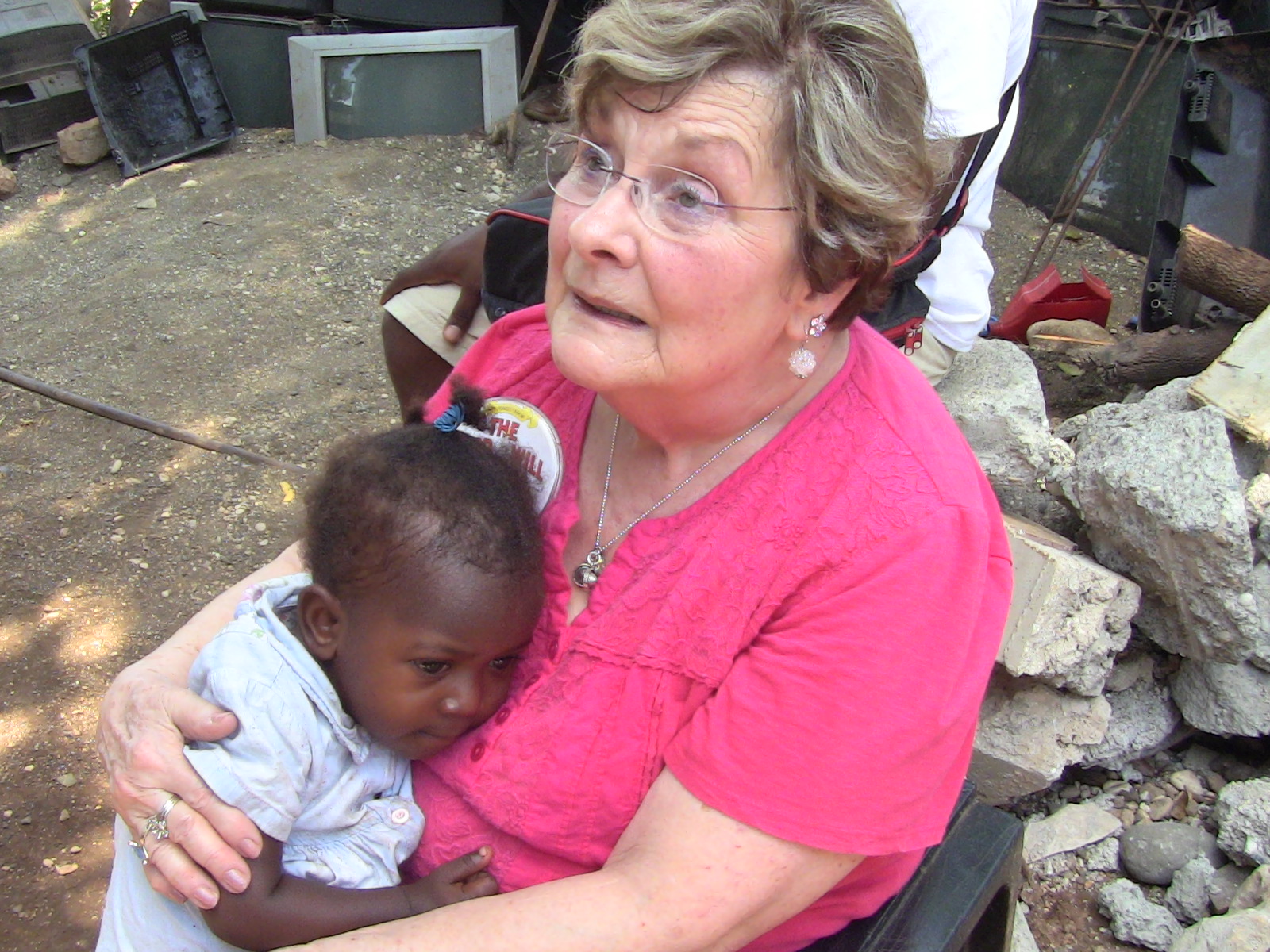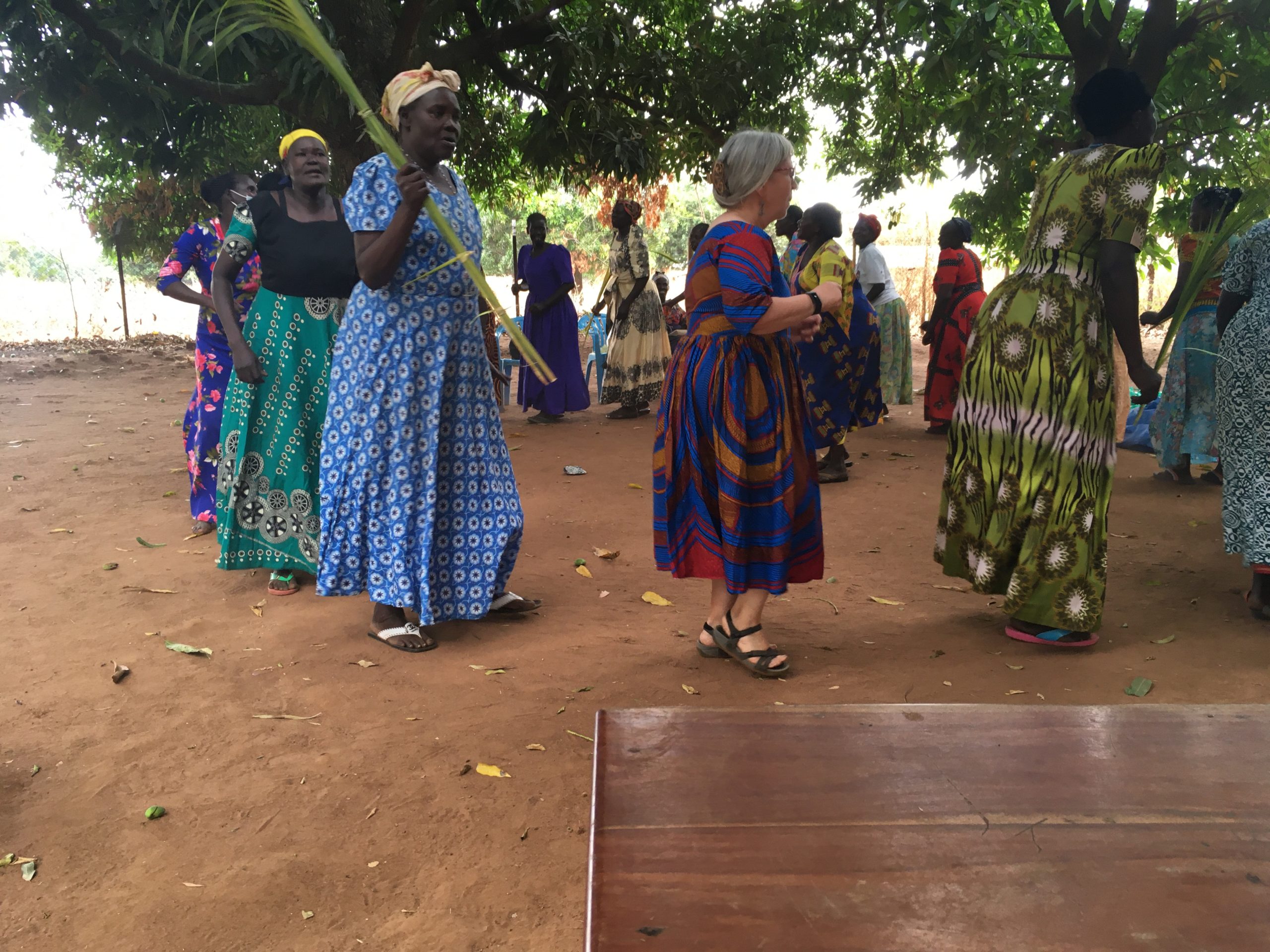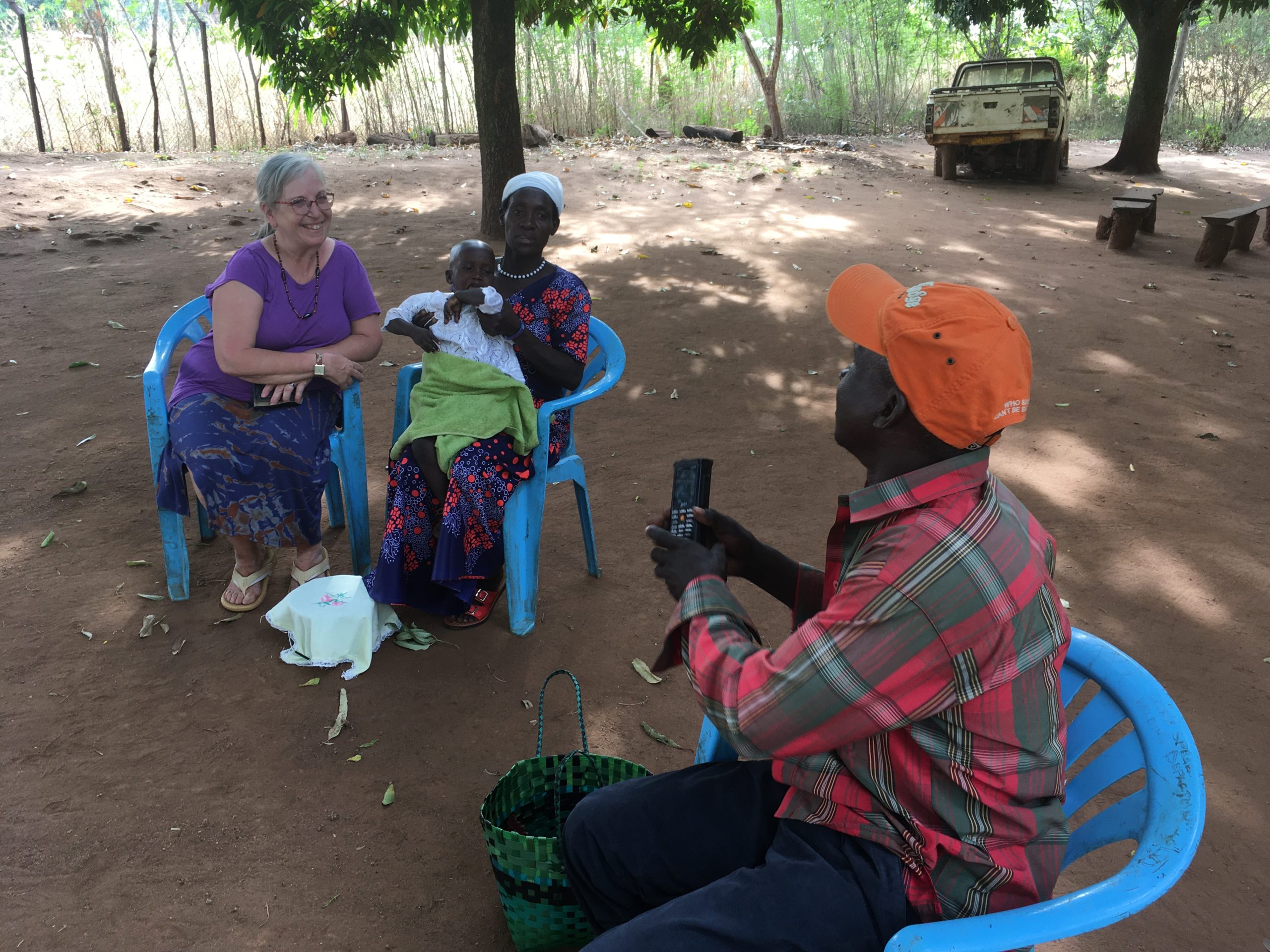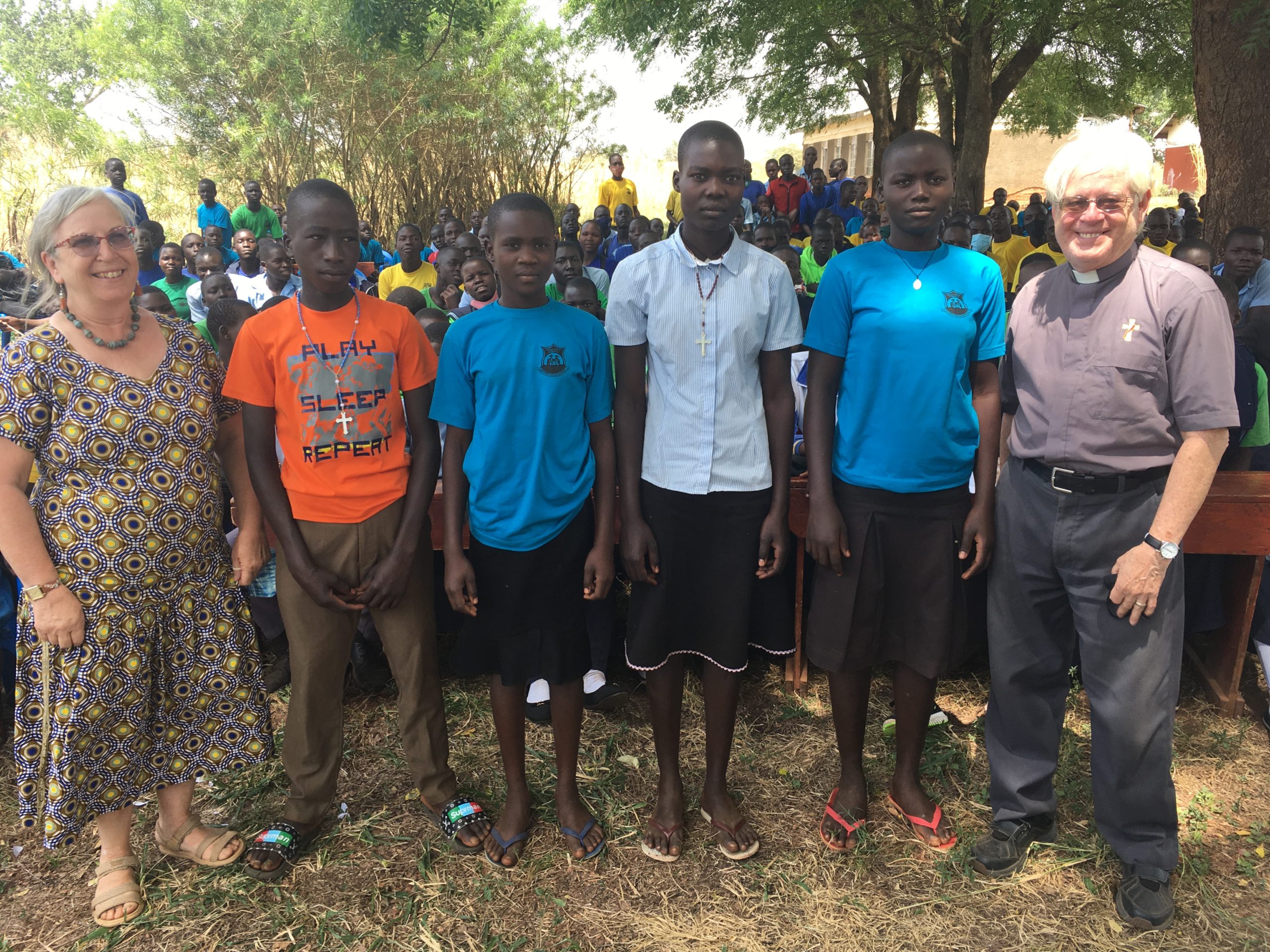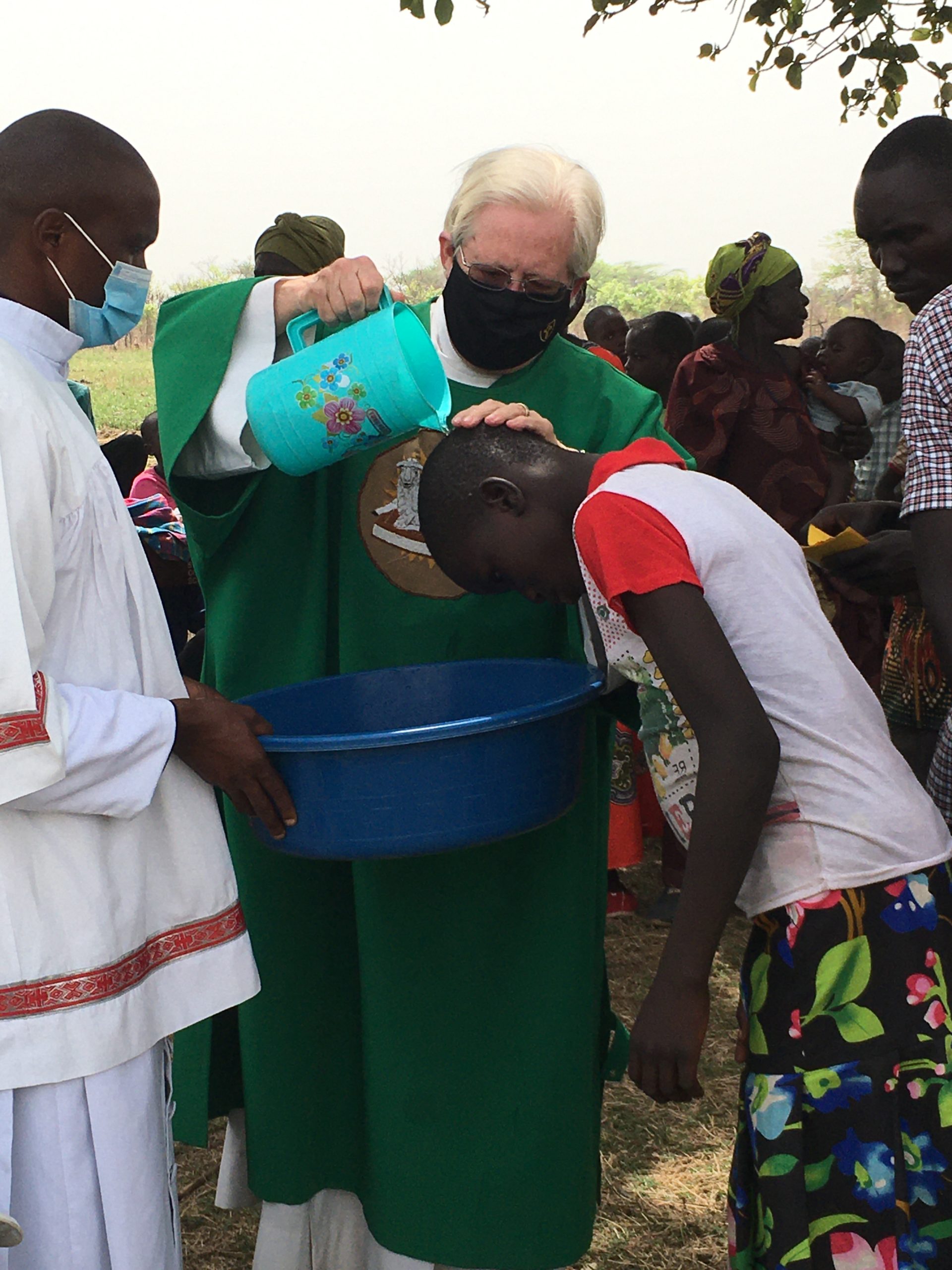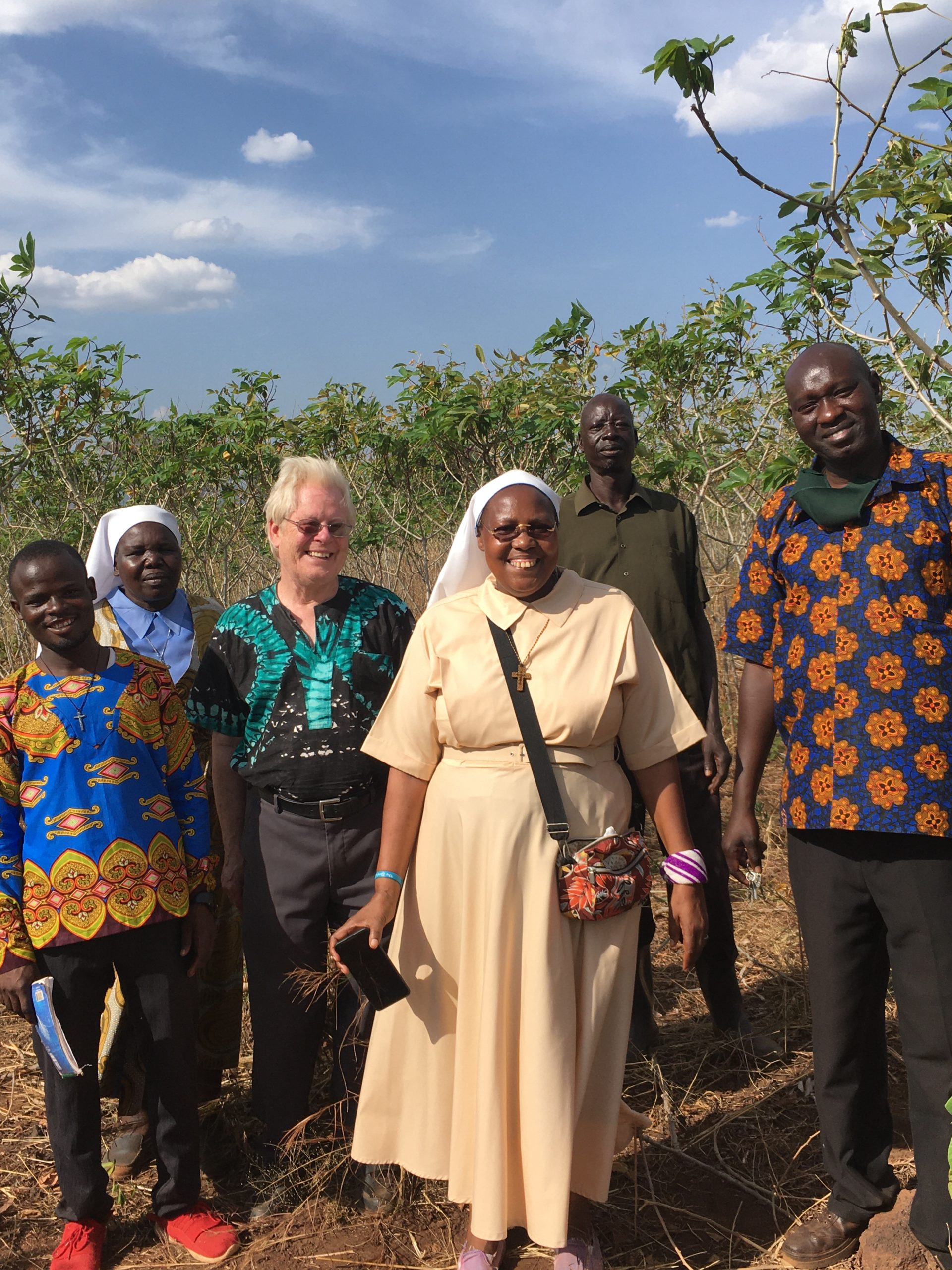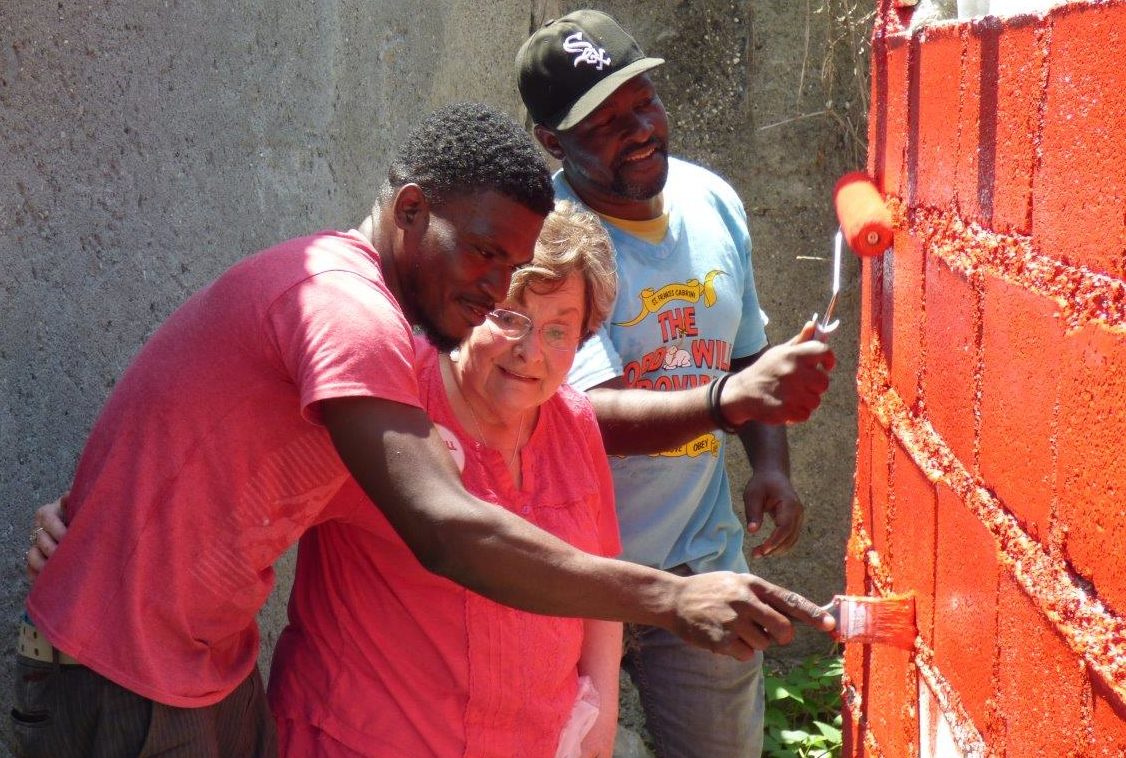
A parishioner from St. Frances Cabrini in West Bend on a mission trip to their twin parish in Haiti. (Photos courtesy of the Office of World Mission)
Most Catholics in southeastern Wisconsin are familiar with the Archdiocese of Milwaukee Sister Parish, La Sagrada Familia in the Dominican Republic. All parishes of the archdiocese support this ministry in some manner; however, many area Catholics aren’t aware there are 63 parishes/parish clusters involved in twinning relationships around the world.
Twinning relationships with parishes, villages or organizations in other countries offer parish communities an opportunity to grow in solidarity with sisters and brothers in other countries and around the world, said Antoinette Mensah, Ph.D., Director of World Mission Ministries, Office for World Mission, Society for the Propagation of the Faith.
“This is an excellent way to experience God’s love,” Mensah said. “We have parishes such as Sts. Peter and Paul that have had a twinning relationship with San Ildefonso in Chapas, Mexico, for 25 years. The challenge for parishes like them is not just financial, but also trying to build another population of people to take up the mantle of these relationships.”
St. Frances Cabrini Parish in West Bend has enjoyed a twinning relationship with Haiti, the poorest country in the Western Hemisphere, for 33 years. Cabrini team members have traveled on missions to Haiti numerous times and brought duffel bags filled with tote bags, school supplies, bibles, quilts and clothing. They also sent several large containers to the country filled with furniture, office supplies, bikes and food.
Mensah explained that when she was at St. Francis Borgia in Cedarburg earlier this year, they were trying to reintroduce the parish to their relationship with St. Paul the Apostle Parish in
Mukono, Uganda.
“They were trying to build more connections with this wonderful relationship and try to get the young adults to become engaged,” she said.
Some reasons parishes opt for a twinning relationship is that it is a response to Jesus’ call to justice, expands a parish’s and parishioners’ self-identity and reflects the Vatican II definition of mission. The choice to twin also acknowledges and demonstrates appreciation for the universality of the Church.
But the motivation for entering the twinning relationship must come from a desire to faithfully represent a Vatican II understanding of the Church and a willingness to accept their responsibility for participating in the missionary activity of the Church. Parish twinning reflects a Vatican II ecclesiology and this understanding of the missionary activity of the Church. For a parish to enter an ongoing relationship with a faith community in the missions is to choose to embrace a new way of being a parish. It is a choice that can offer great renewal for the parish.
Even though most parishes won’t receive public acknowledgment of their twinning efforts in the news, Mensah said these relationships are imperative for building global outreach and the Universal Church.
“There is more we can do to build relationships,” Mensah said. “All twinning opportunities for persons involved include donating money, providing clothing and visiting the people, but how does that translate to faith formation and engagement with others in my neighborhood and community? Whatever I try to create among these twinning parishes or on mission trips should reflect those who encounter me every day. Being involved in outreach should reflect on your personal life.”
Seven parishes are twinned with La Sagrada, and 63 parishes have sister parishes, which amounts to 10 percent of the archdiocesan population.
“This means the rest of the 197 parishes have opportunities around the world to help children and each other,” she said. “I want to promote all parishes to become engaged in twinning relationships, and I don’t mean just giving money. Maybe go on mission trips and learn about these different communities, so it opens the door for broader outreach, especially for young adults.”
Mensah recalled a recent memorial Mass for Mary McCormick (1912-2002), a missionary who spent many years serving in Colombia. She lost her husband in 1956, just before the birth of her seventh child.
“Her husband died during a time when women were not able to do anything without her husband’s approval, such as buy a car or have a checking account,” she said. “She was raising her children on a widow’s pension. She brought her three youngest daughters to Colombia with her to serve as a missionary in Bogota for many years.”
One of the greatest gifts that the mission Church provides is that in its witness of faith, it provides a reflection that allows an examination of faith life. In learning more about brothers and sisters from other cultures, new ways of understanding the Scriptures can be learned. Catholics can see new models of what it’s like to be in a parish community and encounter experiences of God’s interaction with his people different than our own.
Becoming engaged with those from another part of the world helps to not only understand cultures but also to realize that good people live everywhere, said Mensah.
“There is a hidden treasure among twinning parishes, and we would like to shout them out,” Mensah said. “Some of those in charge of these ministries are getting elderly and would like to pass the torch onto younger parishioners.”

